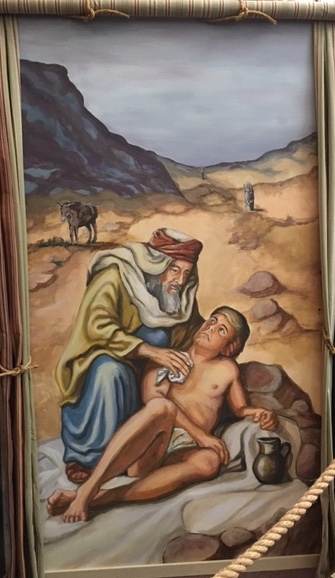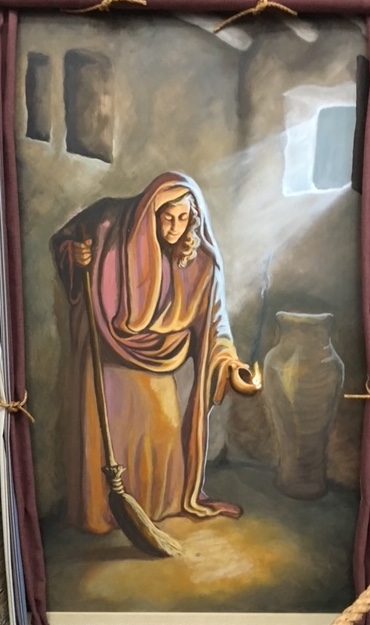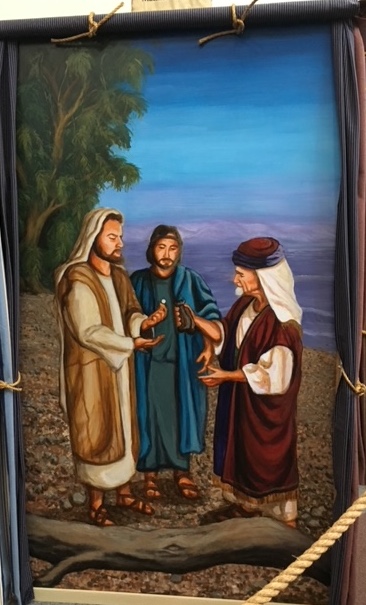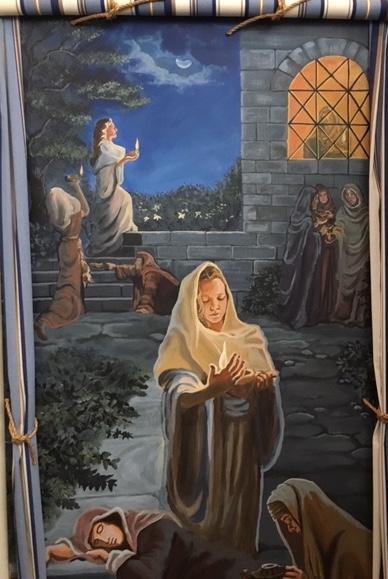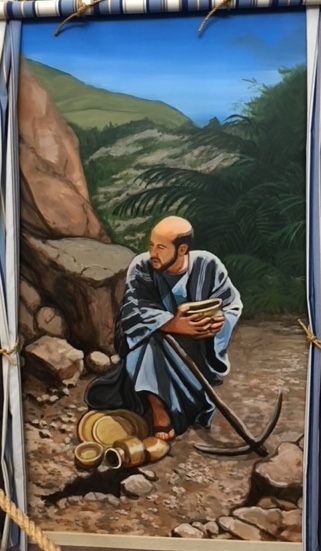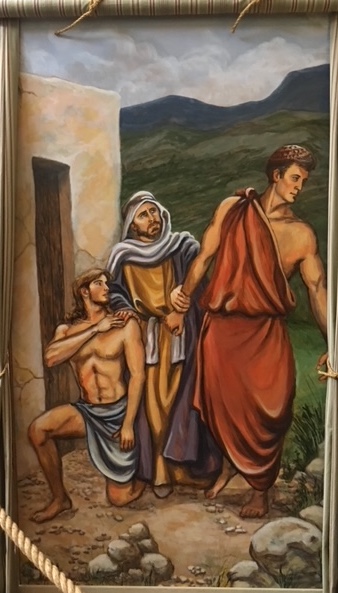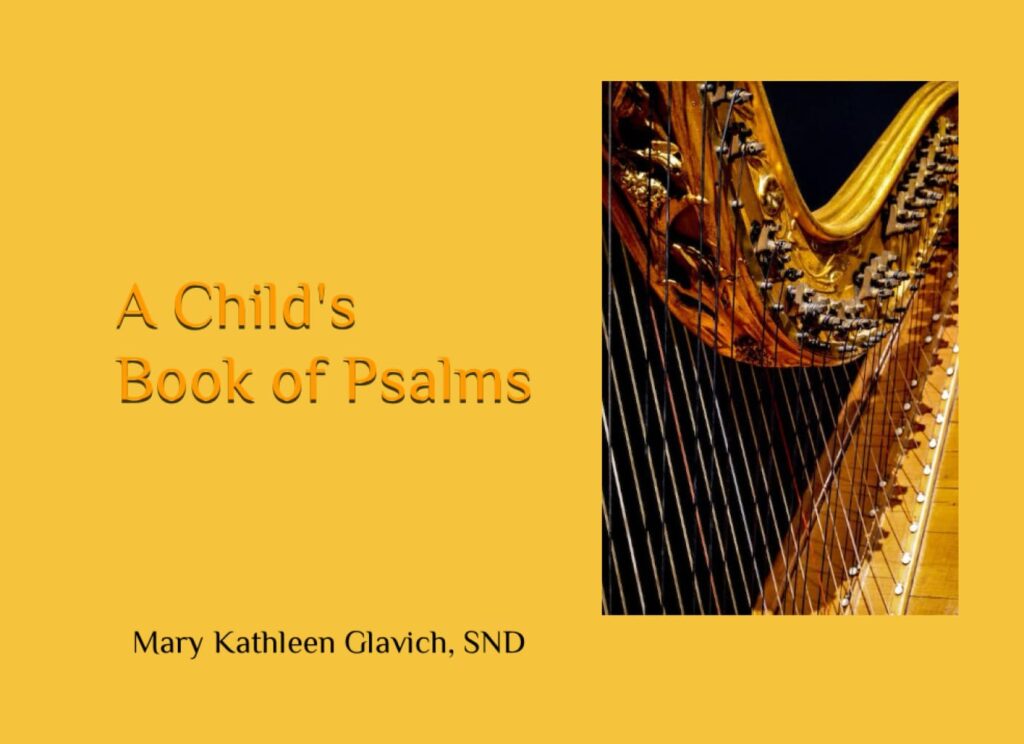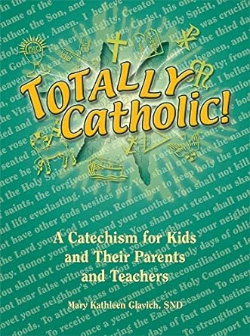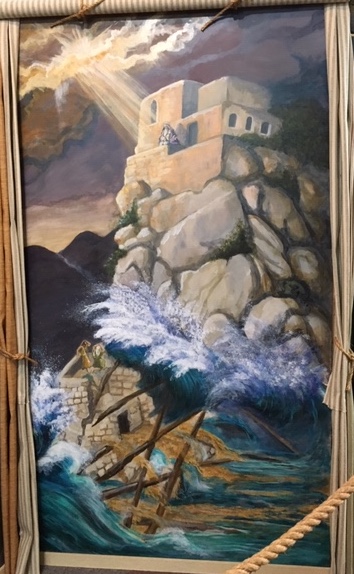
The Bible Walk in Mansfield, Ohio, is a life-size wax museum that houses many large oil paintings of the parables by Mark Pedro. Some are pictured at the end of this blog. Did you know that parables are one-third of the Synoptic Gospels? They are a main teaching device for Jesus through which he revealed knowledge about God (he is merciful), the kingdom of God (it is worth everything), and what it means to follow him (care for the poor). Some parables foretell the crucifixion, and others warn to be ready for the end of the world.
We love stories: books, movies, TV shows. A parable is usually a story, although some are short analogies or similes. The word parable is from the Greek for “comparing side by side.” Parables use ordinary situations of daily life to shed light on something extraordinary. Some are like riddles in that they challenge us to figure out their meaning. John Shea compares a parable to a joke: you either get it or you don’t. Parables give us glimpses of God’s kingdom: It is like a treasure, a wedding feast, a mustard seed.
Parables sometimes end with a surprise. As Archibald M. Hunter wrote, a parable is “one of those stories in the bible which sounds at first like a pleasant yarn, but keeps something up its sleeve which suddenly pops up and knocks you flat.” This is especially true for the parable about the man who pays the very late workers the same as those who worked all day.
The parables of Jesus are fresh and new. He was a creative storyteller, yet his stories are simple with only a skeleton of a plot or a sharp characterization. They are told in language a child could understand are easily pictured in the mind. They charmed listeners and left a lasting impression. Jesus also employed his people’s habit of embellishment and exaggeration, such as the servant who owed a fantastic amount of money.
The people who first listened to the parables—as well as us moderns—could easily identify with them. They refer to homey things like baking bread, planting seeds, building a house, and forgiving a wayward son. They include characters that resemble people we know, such as the farmer who wants to build more silos for his abundant grain rather than sharing his wealth.
The more we learn about the people back then, the more we will understand the parables. For example, when Jesus said that seeds yielded a hundredfold, the audience probably roared with laughter, for that would be impossible. Plus, in those days seeds were not sown after the ground was plowed but before. That is why they landed on stones and paths. The Samaritans were enemies of the Jews, so having a Samaritan care for a beaten Jew on the side of the road was a powerful lesson.
The meaning of a parable sometimes depends on the audience. In Luke, after the Pharisees accuse Jesus of eating with sinners, he justifies his action by telling about the shepherd going after the lost sheep after the Pharisees accuse him of eating with sinners. On the other hand, in Matthew Jesus tells this parable to his disciples to encourage them to care for the sinners, the little ones.
The parables were an oral tradition, which is why some have several versions and some have been fused together. Parables actually have three levels of meaning: the original meaning Jesus intended, the meaning of the primitive Church, and the reinterpretation of the evangelists, who adopted the parables to their own audience.
Sometimes a parable is treated as an allegory where every element is a symbol. For example, to St. Augustine, in the parable of the Good Samaritan, the victim corresponded to Adam, the thieves to the devil, the Samaritan to Christ, oil to hope, and the inn to the Church. However, the principle guiding the the interpretation of parables is to look for one dominant point and not to be concerned about details. Beyond this, we might ask what God is saying to us and our community personally in a parable.
People still tell parables. You are probably familiar with the popular story “Footprints.”
• What is your favorite parable?

